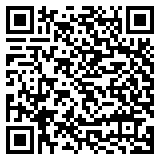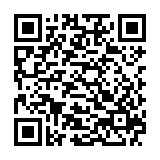In a world that’s more connected than ever before, being able to communicate with people from different languages is a superpower. Whether you’re traveling to a new country, working in a diverse team, or learning a new language, interpretation tools can help bridge the gap. These tools are evolving fast, and by 2025, they will be even more powerful and user-friendly. Let’s dive into the most common interpretation tools and see how they’re changing the way we communicate!
What Are Interpretation Tools?
Before we get into the details, let’s first understand what interpretation tools are. An interpretation tool is a technology that helps translate spoken words or text from one language to another. They can be used in real-time conversations or to help you understand written material. These tools can help people who don’t speak the same language communicate easily, whether in a meeting, at a tourist spot, or even while learning a new language.
As we move toward 2025, these tools are getting smarter, faster, and more accurate. Let’s take a look at the most common ones.
Real-Time Translation Apps: Your Pocket Interpreter
What Are They?
Real-time translation apps are probably the most popular interpretation tools today, and they’re only getting better. These apps work by listening to spoken words and instantly translating them into another language. You can use them to have live conversations, whether you’re chatting with someone in person or over the phone. Some apps also translate text from images, helping you understand signs, menus, or documents.
Popular Apps to Try in 2025
- Google Translate: One of the most famous tools out there, Google Translate, supports over 100 languages and can translate both text and voice in real-time. By 2025, it will likely be even more accurate and able to handle complex conversations.
- iTranslate: This app works similarly to Google Translate, but it also offers an offline mode, which is perfect if you’re in an area without Wi-Fi.
- Microsoft Translator: Known for its user-friendly interface, Microsoft Translator allows you to have real-time conversations in over 60 languages. It can also sync across devices, making it easier to switch between platforms.
Why Are They So Popular?
These apps are easy to use, portable, and can be downloaded on smartphones. Since most people carry their phones everywhere, real-time translation apps are always ready to help you communicate when needed. By 2025, you can expect even better accuracy, especially with improvements in machine learning and artificial intelligence (AI).
Wearable Devices: The Future of On-the-Go Translation
What Are They?
Imagine having a device that translates spoken language directly into your ear while you’re in a conversation. That’s what wearable translation devices are all about! These tiny gadgets work by listening to the conversation around you and then translating it into a language you understand—through a headphone or earpiece.
Popular Wearables in 2025
- Timekettle WT2 Plus: This earbud translator allows you to have conversations with people who speak different languages. The earbuds are comfortable and provide real-time translation, making them great for travelers and business professionals.
- Waverly Labs Ambassador: This translation headset is designed to provide real-time interpretation of multiple languages. It’s often used by businesses or in international conferences where quick and accurate translations are needed.
Why Will Wearables Be Popular?
Wearable devices offer the convenience of hands-free translation, making them perfect for people who need constant language support. In 2025, wearable devices are expected to become even more compact, comfortable, and capable of translating multiple languages at once, making them an essential tool for travelers, tourists, and even professionals working in global teams.
AI-Powered Translation Tools: Supercharging Accuracy
What Are They?
Artificial Intelligence (AI) is revolutionizing language translation. AI-powered translation tools go beyond basic translations; they learn from past conversations, improving the quality and accuracy of the translations. This technology can translate complex phrases, handle regional dialects, and even detect the tone and context of a conversation.
Popular AI-Powered Tools in 2025
- DeepL Translator: Known for its powerful AI and machine learning capabilities, DeepL is one of the best translation tools for achieving high accuracy in both text and voice translations. By 2025, expect it to handle more languages and offer even more advanced features.
- ChatGPT Translation Features: With advancements in AI, tools like ChatGPT will continue to evolve. These tools will be able to help with more nuanced translations, making sure that what you say sounds natural, even in a different language.
Why Are AI Tools the Future?
The ability of AI to “understand” the context of language is what sets it apart from traditional translation methods. AI-powered tools are becoming smarter and more reliable every day. By 2025, they will be able to handle even the most complicated of conversations, making them perfect for business meetings, educational purposes, and even casual chats with friends around the world.
Video and Speech Translation Tools: Connecting People Face-to-Face
What Are They?
In addition to translating text and voice, video and speech translation tools will make it possible to communicate across language barriers in video calls, online classes, and conferences. These tools combine AI and real-time translation to provide translations in both voice and subtitles while allowing the conversation to flow naturally.
Popular Tools in 2025
- Zoom’s Real-Time Translation: Video conferencing platforms like Zoom are adding built-in real-time translation and transcription features. By 2025, these features will likely be more accessible and accurate, allowing for smooth, multilingual conversations.
- Skype Translator: Skype’s translation tool offers real-time voice translation and subtitles during video calls. By 2025, it will continue to improve with new language options and faster translations.
Why Video and Speech Tools Are a Game Changer
As more people work remotely and engage in virtual meetings, having real-time video and speech translation tools will be a game changer. Whether you’re attending a global conference, chatting with friends from another country, or working on an international team, these tools will help you break down language barriers and connect with people like never before.
Conclusion: The Future of Communication is Multilingual
By 2025, interpretation tools will continue to improve, making it easier than ever to communicate across languages. From real-time translation apps to wearable devices and AI-powered tools, the future of language interpretation is looking brighter than ever. Whether you’re traveling, learning, or working globally, these tools will help you break down language barriers and connect with people from all over the world. So get ready—2025 is going to be an exciting year for global communication!





0 Comments